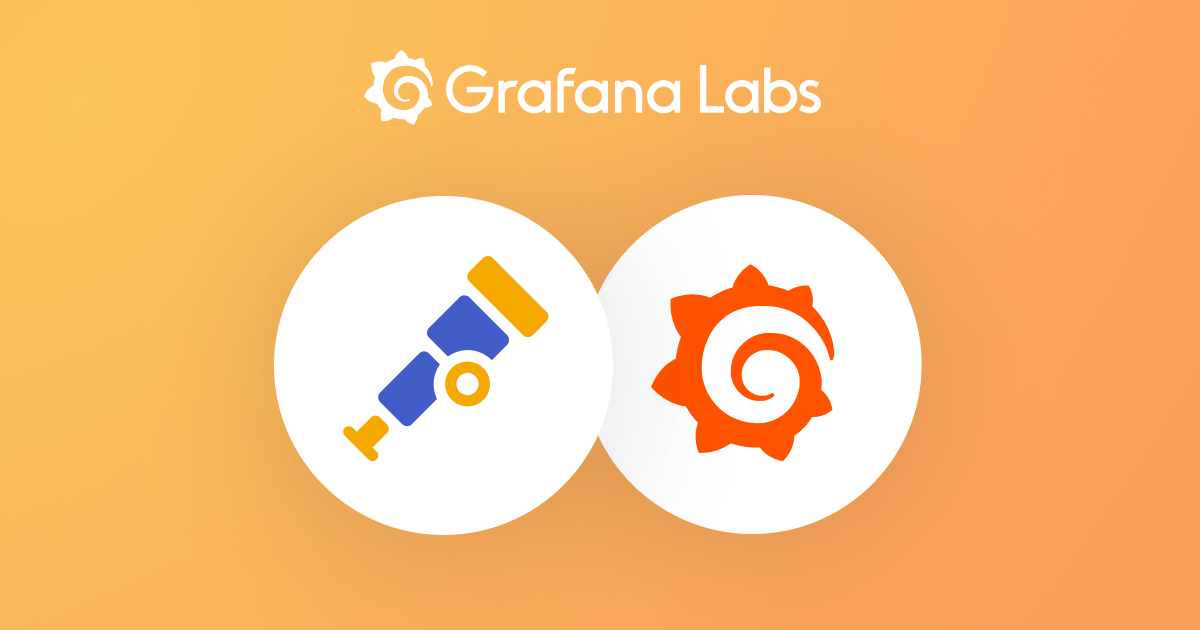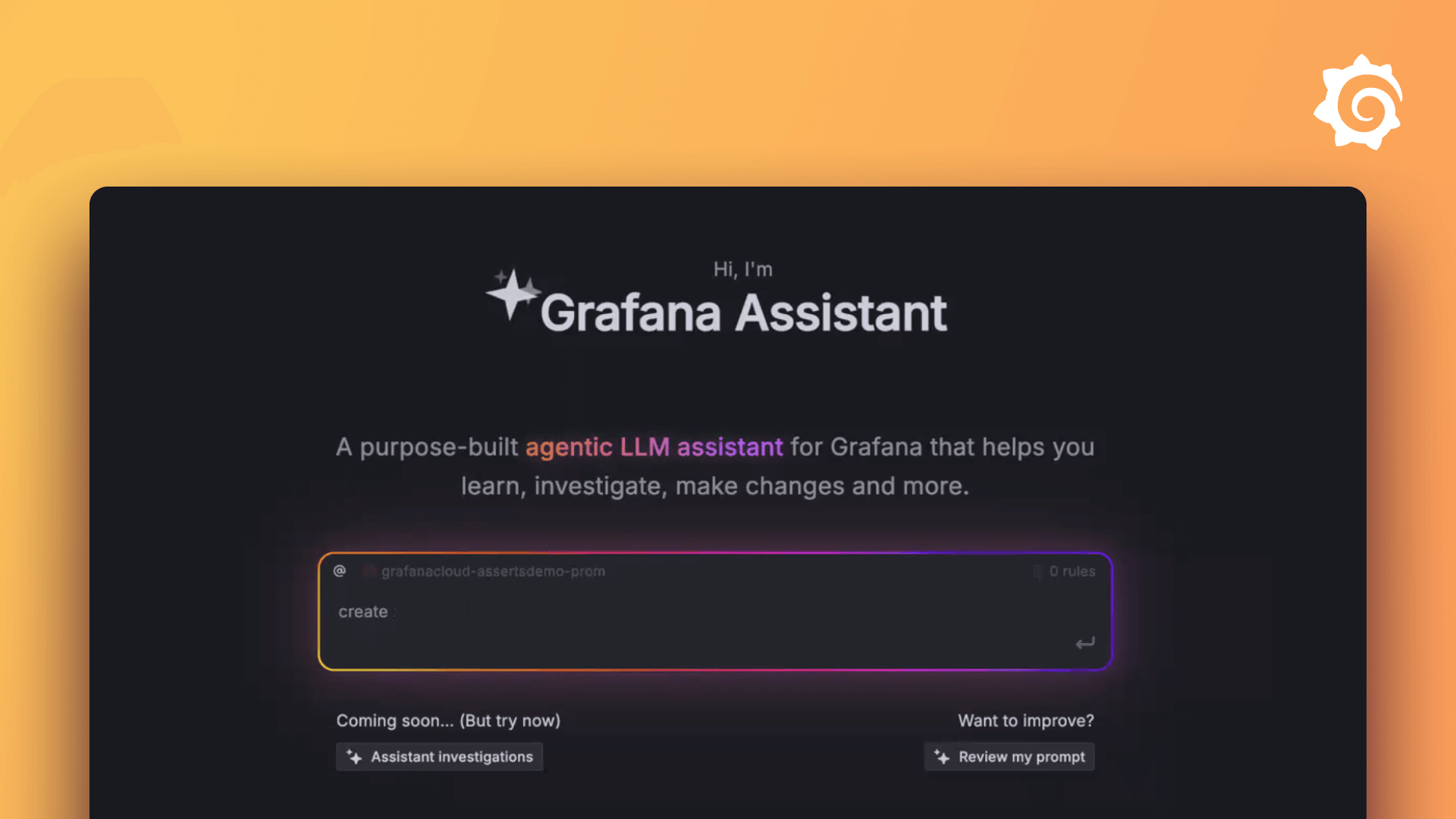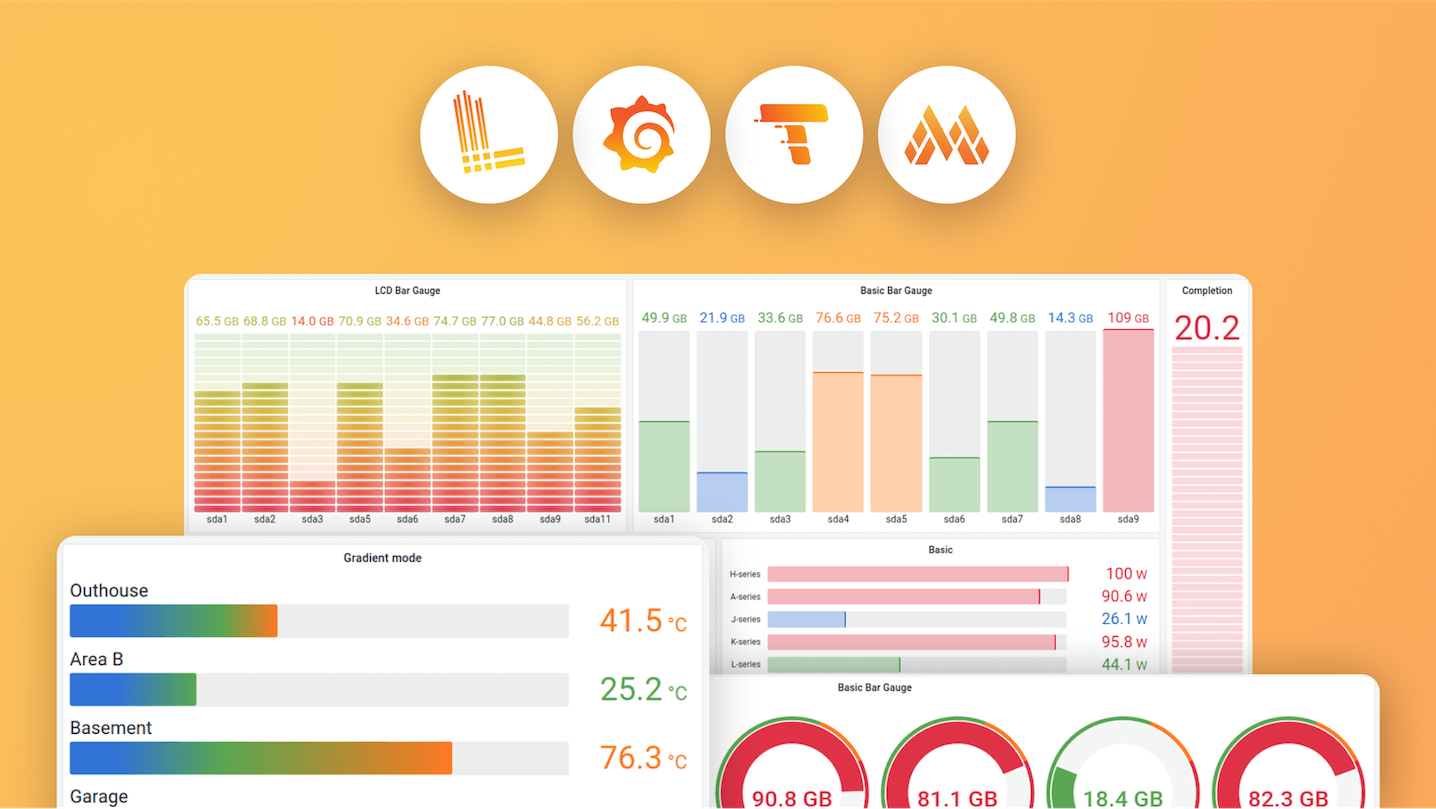Plugins 〉Gnocchi
The Gnocchi plugin has been deprecated and is no longer maintained.
Gnocchi
Grafana Gnocchi datasource 
Gnocchi datasource for Grafana >= 4

Installation via grafana.net
$ sudo grafana-cli plugins install gnocchixyz-gnocchi-datasource
Installation from sources
$ npm install
$ ./run-tests.sh # This also build the plugin under dist/
$ ln -s dist /var/lib/grafana/plugins/grafana-gnocchi-datasource
$ # or
$ cp -a dist /var/lib/grafana/plugins/grafana-gnocchi-datasource
Configuration Panel

| Name | Description |
|---|---|
| Name | The data source name. |
| Default | Default data source means that it will be pre-selected for new panels. |
| Url | The http protocol, ip and port of your Keystone or Gnocchi server (default port is usually 8080) |
| Access | Proxy = access via Grafana backend, Direct = access directory from browser. |
| Token | A valid Keystone token |
| Project | The keystone user |
| User | The Keystone user |
| Password | The Keystone password |
Note: If the Keystone server is set as URL, the Gnocchi server will be autodiscovered. This works only if Access = Direct, and CORS is properly configured on Keystone and Gnocchi side.
Query editor
The editor leverage thes Dynamic Aggregate API of Gnocchi:
- Select first the resource type you are looking for.
- Create a query to select all resources you need.
- Create an operation that selects metric and does math on/between them.
- Set label to name each graph with text or with resource attributes.
The Query format is documented as STRING format in Resource search section of Gnocchi documentations.
The Operation format is documented in Dynamic Aggregates section of Gnocchi documentations.

Other Query type exists for special use case and for old Gnocchi version that doesn't support Dynamic aggregates
Labels
Labels can be expressed with resources attributes and metric name. To do so attribute must be surrounded by ${} or prefixed by $.
For example, takes the metric regex "cpu_*", the label "$display_name-${host}.foo-$type $metric" and a query that returns these resources::
[
{
"display_name": "myfirstvm",
"host": "compute1",
"id": "6868da77-fa82-4e67-aba9-270c5ae8cbca",
"image_ref": "http://image",
"type": "instance",
"server_group": "autoscalig_group",
"metrics": {"cpu_util": "1634173a-e3b8-4119-9eba-fa9a4d971c3b"}
},
{
"display_name": "mysecondvm",
"host": "compute3",
"id": "f898ba55-bbea-460f-985c-3d1243348304",
"image_ref": "http://image",
"type": "instance",
"server_group": "autoscalig_group",
"metrics": {"cpu_util": "58b233f4-65ba-4aeb-97ba-b8bc0feec97e",
"cpu_time": "6ff95458-97b4-4b08-af03-7d18b05d277e"}
}
]
The resulting labels are::
myfirstvm-compute1.foo-instance cpu_util mysecondvm-compute3.foo-instance cpu_util mysecondvm-compute3.foo-instance cpu_time
Templated queries
Gnocchi Datasource Plugin provides following functions in Variables values query field in Templating Editor.
| Name | Description |
|---|---|
metrics(resource_id) | Returns a list of metrics available for the resource identified by ‘resource_id’ |
resources(resource_type, attribute, query) | Returns a list of resource attribute matching query. |
resources(resource_type, attribute1, attribute2, query) | Returns a list of resource attribute matching query, attribute1 is diplayed in selector, attribute1 used for templating. |

For details of Query format, please refer to the Gnocchi and Gnocchi client documentations.
- Search for resource - Gnocchi client Documentation for expression format
- Search for resource - Gnocchi Documentation for the raw json format.
Current Limitation
Grafana doesn’t allow to query two different servers when using the proxy mode, so we are not able to query Keystone for a token and then query Gnocchi (Except if Gnocchi and Keystone live into the same HTTP host).
In direct mode, CORS MUST be enabled on Keystone and Gnocchi servers.
License
APACHE LICENSE Version 2.0, January 2004
Grafana Cloud Free
- Free tier: Limited to 3 users
- Paid plans: $55 / user / month above included usage
- Access to all Enterprise Plugins
- Fully managed service (not available to self-manage)
Self-hosted Grafana Enterprise
- Access to all Enterprise plugins
- All Grafana Enterprise features
- Self-manage on your own infrastructure
Grafana Cloud Free
- Free tier: Limited to 3 users
- Paid plans: $55 / user / month above included usage
- Access to all Enterprise Plugins
- Fully managed service (not available to self-manage)
Self-hosted Grafana Enterprise
- Access to all Enterprise plugins
- All Grafana Enterprise features
- Self-manage on your own infrastructure
Grafana Cloud Free
- Free tier: Limited to 3 users
- Paid plans: $55 / user / month above included usage
- Access to all Enterprise Plugins
- Fully managed service (not available to self-manage)
Self-hosted Grafana Enterprise
- Access to all Enterprise plugins
- All Grafana Enterprise features
- Self-manage on your own infrastructure
Grafana Cloud Free
- Free tier: Limited to 3 users
- Paid plans: $55 / user / month above included usage
- Access to all Enterprise Plugins
- Fully managed service (not available to self-manage)
Self-hosted Grafana Enterprise
- Access to all Enterprise plugins
- All Grafana Enterprise features
- Self-manage on your own infrastructure
Grafana Cloud Free
- Free tier: Limited to 3 users
- Paid plans: $55 / user / month above included usage
- Access to all Enterprise Plugins
- Fully managed service (not available to self-manage)
Self-hosted Grafana Enterprise
- Access to all Enterprise plugins
- All Grafana Enterprise features
- Self-manage on your own infrastructure
Installing Gnocchi on Grafana Cloud:
Installing plugins on a Grafana Cloud instance is a one-click install; same with updates. Cool, right?
Note that it could take up to 1 minute to see the plugin show up in your Grafana.
Installing plugins on a Grafana Cloud instance is a one-click install; same with updates. Cool, right?
Note that it could take up to 1 minute to see the plugin show up in your Grafana.
Installing plugins on a Grafana Cloud instance is a one-click install; same with updates. Cool, right?
Note that it could take up to 1 minute to see the plugin show up in your Grafana.
Installing plugins on a Grafana Cloud instance is a one-click install; same with updates. Cool, right?
Note that it could take up to 1 minute to see the plugin show up in your Grafana.
Installing plugins on a Grafana Cloud instance is a one-click install; same with updates. Cool, right?
Note that it could take up to 1 minute to see the plugin show up in your Grafana.
Installing plugins on a Grafana Cloud instance is a one-click install; same with updates. Cool, right?
Note that it could take up to 1 minute to see the plugin show up in your Grafana.
Installing plugins on a Grafana Cloud instance is a one-click install; same with updates. Cool, right?
Note that it could take up to 1 minute to see the plugin show up in your Grafana.
For more information, visit the docs on plugin installation.
Installing on a local Grafana:
For local instances, plugins are installed and updated via a simple CLI command. Plugins are not updated automatically, however you will be notified when updates are available right within your Grafana.
1. Install the Data Source
Use the grafana-cli tool to install Gnocchi from the commandline:
grafana-cli plugins install The plugin will be installed into your grafana plugins directory; the default is /var/lib/grafana/plugins. More information on the cli tool.
Alternatively, you can manually download the .zip file for your architecture below and unpack it into your grafana plugins directory.
Alternatively, you can manually download the .zip file and unpack it into your grafana plugins directory.
2. Configure the Data Source
Accessed from the Grafana main menu, newly installed data sources can be added immediately within the Data Sources section.
Next, click the Add data source button in the upper right. The data source will be available for selection in the Type select box.
To see a list of installed data sources, click the Plugins item in the main menu. Both core data sources and installed data sources will appear.



